Winter War was fought between The Soviets and Finland army, the war broke out after the Soviet Union decided to invade Finland three months after World War II began. This is the time when over half a million Soviets were sent to cross the Finnish borders and this was the beginning of Simo Häyhä or as the Russians called him — The White Death.
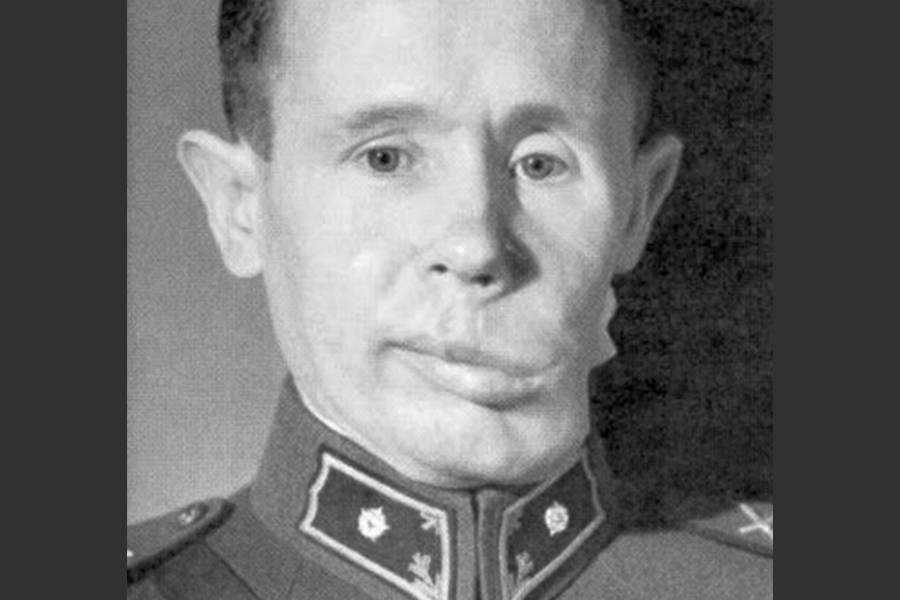
Russians believed the war would be easy with Finland as after all the numbers were decidedly in their favor, even more, the Soviets had enough of everything, soldiers, ammunition, vehicles, advanced weaponry — but the unexpected happened — Finland emerged victorious after the three-month-long war.
The Soviet army men marched into Finland with over 750,000 outnumbering the Finnish army by over 350,000 more soldiers than them. Not only the men power but Finland had only a handful of tanks and around 100 aircraft, compared to that of Soviet Union which had more than 3,000 aircraft and over 6,000 tanks, the numbers were definitely not in favor of Finland.
Although, there was one thing the Russians were unaware of that Finland had, Simo Häyhä.
Early Life Of Simo Häyhä
Simo Häyhä Born on 17th December 1905 in a small Finnish municipality of Rautjärvi, near the Russian border. His parents described him as a friendly, mild-mannered, introverted man who kept to himself and to his daily work as a farmhand.
Häyhä’s life was far from easy as he grew up in a village away from city life surrounded by tough Finnish wilderness, harsh unforgiving winters just added to it. Although this later came out to be an advantage for Häyhä during his heroic military services as a Finnish sniper.
As Simo grew up, he excelled as a naturally gifted hunter, renowned for his skills with the rifle. Like most other Finnish men, Häyhä joined the Finnish voluntary militia White Guard at the age of 17.
At the age of 19, he had undergone his mandatory military services and had been promoted to corporal. He also took part in several skiing and shooting competitions and soon he reportedly filled his home full of trophies for marksmanship. Although as his nature was, he usually appeared in very back in group photos, until his success started to force him to take the center place.
In these compulsory Military services, young men like Häyhä were to be prepared for those times when Finland most needed them. And such time came on November 30th, 1939, as the Soviet Union declared war against Finland.
The Winter War and Rise of The White Death
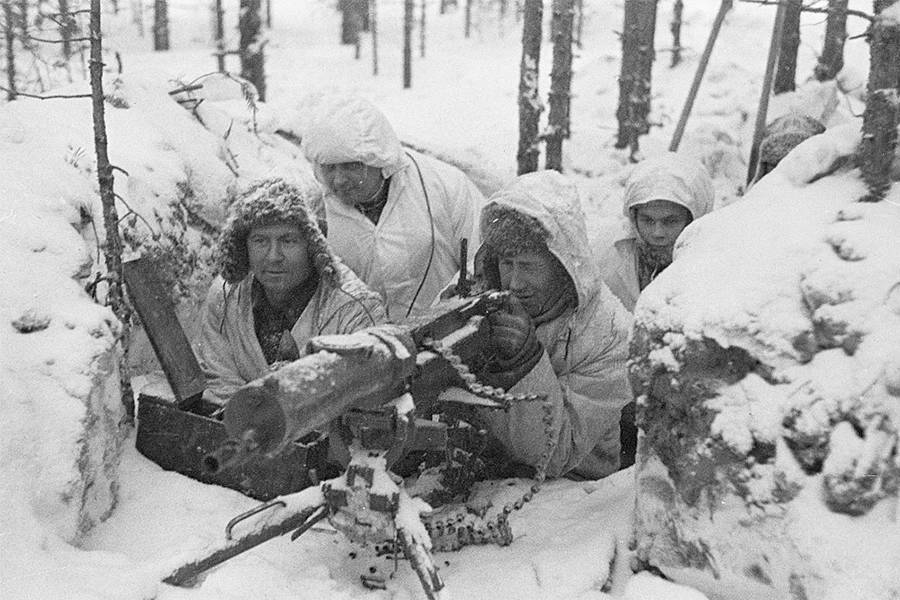
Many Finns like Häyhä himself, valued the liberty of their nation, pretty much above everything else. The liberty would have lost if the Finnish people did not stand up to defend it, regardless of the size of the enemy the call to arms came, and Häyhä like many of his countrymen answered his call of duty.
Simo Häyhä was then a part of the 34th Infantry Regiment in the Kolla region, north of Lake Ladoga (now part of Russia). The Soviet army sought a quick breakthrough across the Kollaa river, but they were not prepared to fight in such a region that was heavily wooded and had barely any infrastructure. Yet Soviets decided to infiltrate the area in one of the worst winters of modern history.
With snow up to two meters deep and temperature down -30°C, Häyhä was given a Finnish Mosin-Nagant M/28-30 Rifle which had been in production since 1928, a bit shorter and a bit heavier than the Russian manufactured rifles.

The Finns could not hope to win against the Soviets in a straight-up pitched battle. The Soviets simply had more of everything than the Finns, men, artillery, while the Finnish art of war relied heavily on hit-and-run tactics.
Although, Finnish men were trained with skies and knew the terrain very well, outflanking, infiltrating, and ambushing the Soviet invaders. Soviet soldiers on the other hand had no skies neither knew how to ski, resisting their mobility in snow.
Häyhä wrapped himself in a thick and heavy snowsuit, insulating himself as much as possible from the snow and cold winds. On top of which he wore fur mittens and a sniper mask.
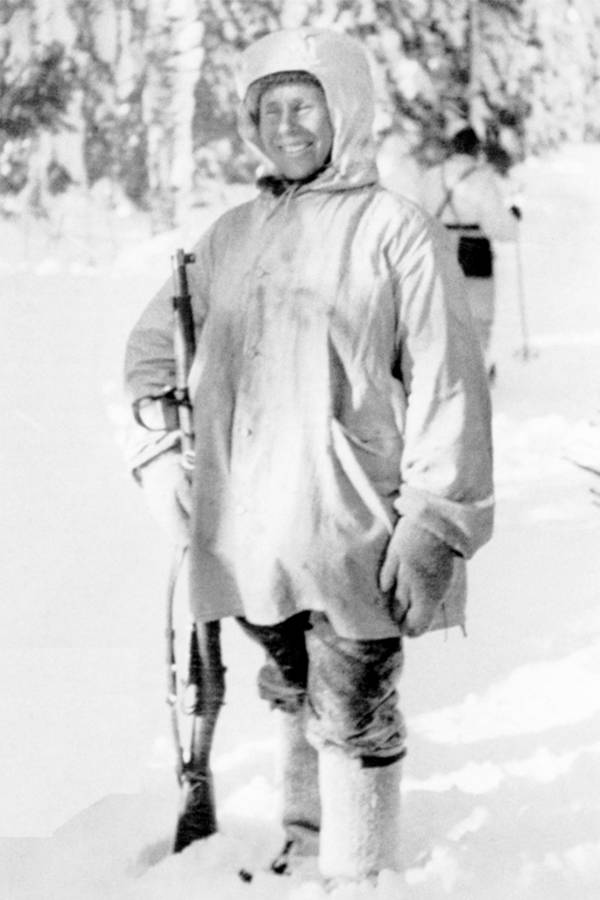
The white color of his clothing blended in perfectly with the winter environment and was a perfect attire for any sniper in the snow. Häyhä preferred to work alone, without any assistance, relying completely on his instincts stalking the deep forests.
Häyhä most of the time carried only a day worth of food and carried around 50-60 rounds with him, yet still survived being trained to live in such a harsh environment from his childhood.
He would first infiltrate an area proceeding with finding the best spot to build his sniper nest. He would then build a little snow fort around himself to blend with the environment. Then he places his rifle on a snowbank, which both stabilized his aim and prevented any snow from being thrown up by the recoil. And waited for the enemy to march into his kill range.
When Soviet soldiers struggling and freezing in the snow without any experience of the terrain would cross his path, Häyhä would put a handful of snow in his mouth to hide his breathe, before pulling the trigger.
It is said that during his training in the army, Simo Häyhä was able to hit a target 150 meters away up to 16 times a minute. These skills were advanced now and marching routes were now full of dead soviet soldiers who fell prey to the hidden sniper. Some of the Soviet soldiers were even found in their last standing positions, frozen in subzero temperatures.
Häyhä soon became unstoppable and the tally of his kills kept rising everyday. It is believed that there was a rare chance that Häyhä would miss his target, hundreds fell to his shots, so many, that his superiors didn’t believe the stories at first.
Apparently, before Christmas, he killed 25 soldiers in just one day. While many Finnish and Soviet snipers used modern sniping rifles, outfitted with telescopic lenses, Häyhä relied on the old fashioned iron sight. He believed that this gave him a better view of his target and more importantly would allow him to keep his head down lower, making him harder to spot.
Many Soviet snipers were sent to counter snipe this deadly Finnish sniper, but they instead met their own death. Since now Russians were being careful in the snow, Häyhä had to be more aware and he chose to forfeit his obvious target a lot many times.
His kill tally gained him both fame and infamy. Soviet soldiers if suspected him of being somewhere would often call in artillery strikes, in the hope of finally neutralizing him, but they never succeeded.
The Tales of White Death
Simo Häyhä gained enough fame within both Soviets and Finnish army. Variants of different stories about this fine sniper started floating around. There is even a story, that Soviets sent one of their best sniper to take out Häyhä. After that sniper had killed a several Finnish soldiers and officers, he waited for Simo to react. He waited and waited long enough but there was no sign of Simo Häyhä. After the sun went out he decided to call it a day, and when he got up to leave his position, a bullet went right through his head, which was of course fired by Häyhä.
Another tale of Simo Häyhä says that Soviet Soldiers being terrified of this unknown sniper started carrying large iron shields into the field, to help protect them from the sniper shots. Although this didn’t help them, and Häyhä being accurate enough simply shot them in the kneecaps.
As these stories began to circulate more and more, Simo Häyhä became famous to friends and foes on the frontline. The Finnish propaganda portrayed him as a symbol that embodied the struggle of little defiant Finland. While the Soviet propaganda named him — White Death.
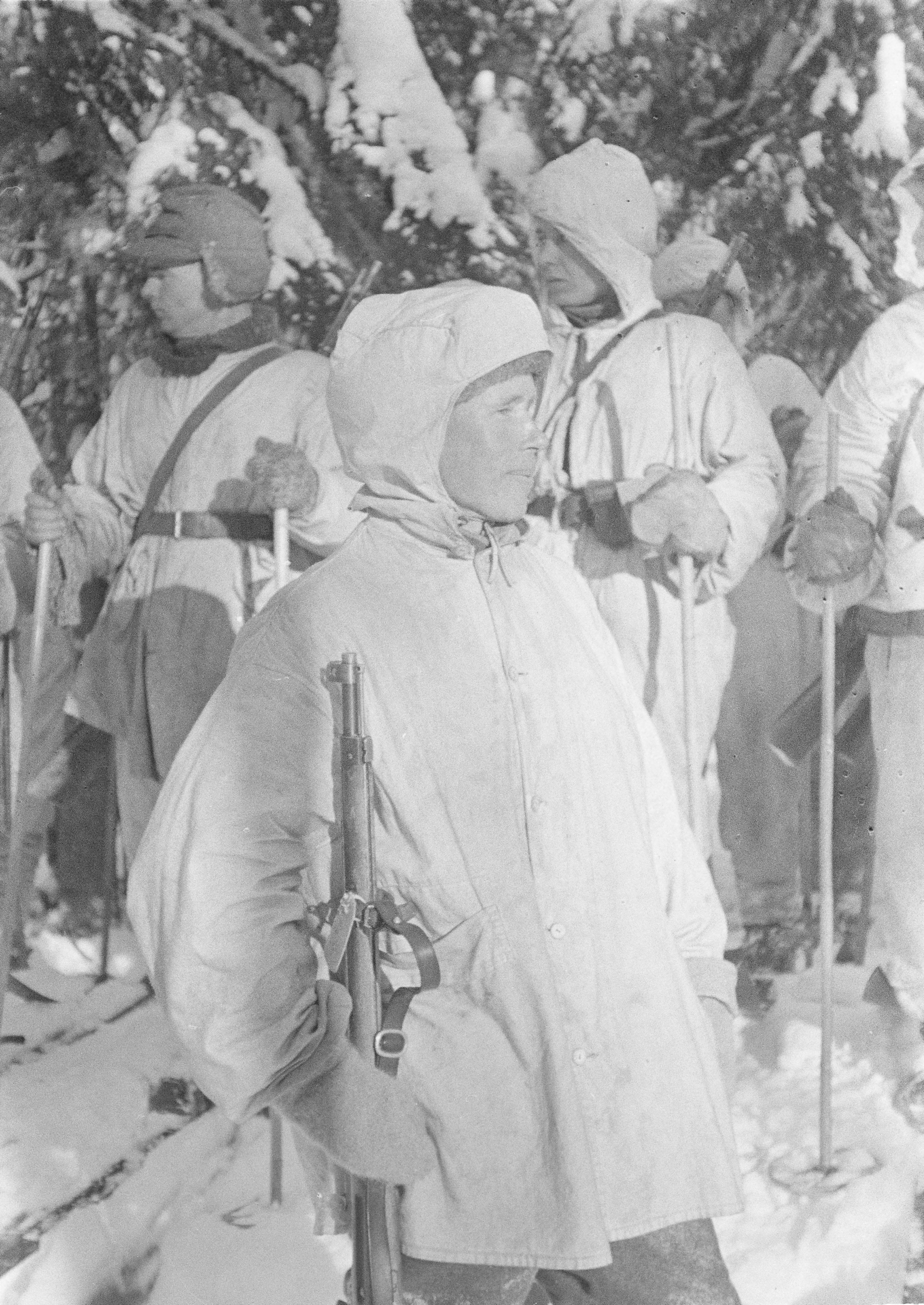
The legend of White Death spoke of a ghost-like figure, that was both everywhere and nowhere, creeping tirelessly through the woods. It freaked the Soviet soldiers and boosted Finnish’s morale. In 17th 1940, 80 days after the invasion, Simo Häyhä was officially proclaimed a hero of Finland by the Finnish government. With hundreds of kills on his name, he was awarded the Kollaa Cross, was promoted and gifted a custom made Sacco M/28-30 Rifle.
But despite the legends, Simo Häyhä was not invincible, and was neither a ghost. He was a man, just like other Finns, manning the defenses.
In early March 1940, as the winter receded, it became clear that though Finland had astonished the world by holding off the Red Army, they could not hold out forever.
Soviets were now advanced and had learned more than before. As the winter was ended too, the Finnish army wasn’t left with many more advantages in the Winter War.
When the White Death got hit
On March 6, Häyhäwas caught up in the middle of renewed Soviet offensive against Kollaa, fighting with the regular troops. Häyhä had again killed at least a dozen that day, but eventually, a bullet went right through his jaw, ripping his lower face apart, but this wasn’t the end of the White Death.
Somi Häyhä was pulled back from the field by his comrades and was taken to the hospital. He went into a coma for 11 days and when he finally awoke on March 13th, peace had been signed.
The war was over, for both him and his country. The Soviets had paid a high price with an estimate of 130,000 dead Soviet army men, but Finnish independence was saved.
Simo Häyhä was fully recovered, despite the wound that he was going to bear for the rest of his life. Although, he was not able to go back to his own home since it was now on the other side of Finnish borders.
He found a new home and lived a long peaceful life, until his death in 2002.
In his later interviews, he repeatedly emphasized that during his service in the Winter War, he simple did what he was told. His official kills were counted to 505, making him the most successful sniper in history, but that’s just an official tally, unofficially, it was higher.
Of course, the numbers will always be debatable, such as the nature of war, but the legends of White Death are very much alive today. When asked what made him such a great sniper, he simply replied: “practice”.
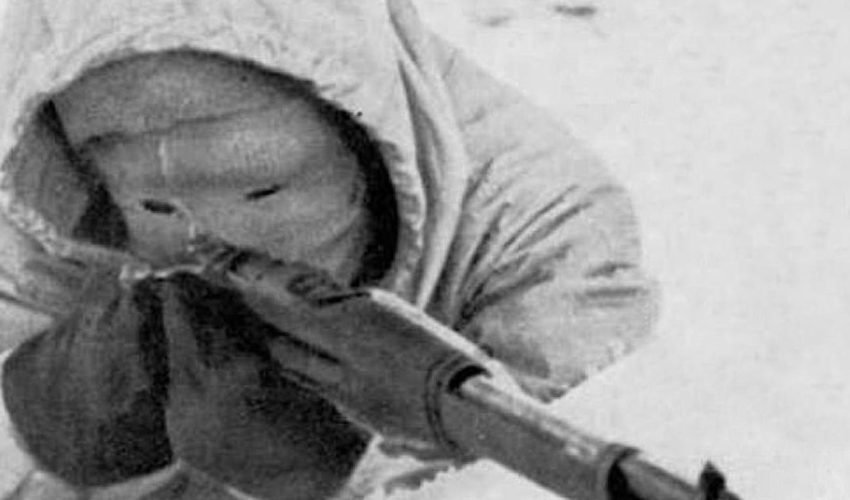


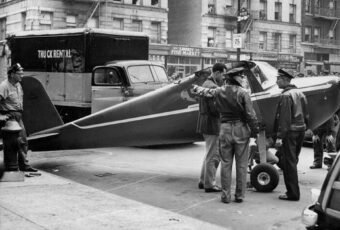





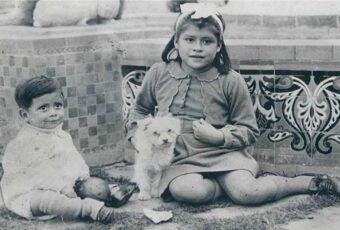

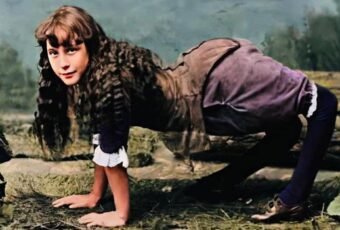
WOW! This may be the most fascinating and heroic war article I have ever read!!!
Awesome.
Thanks for sharing,,,, I am very excited to read about your post of Finland,,,, thanks,,,